Giant Robber Fly - Phellus olgae
Family Asilidae
This page contains pictures and information about Giant Robber Flies
that we found
in the Brisbane area, Queensland, Australia.
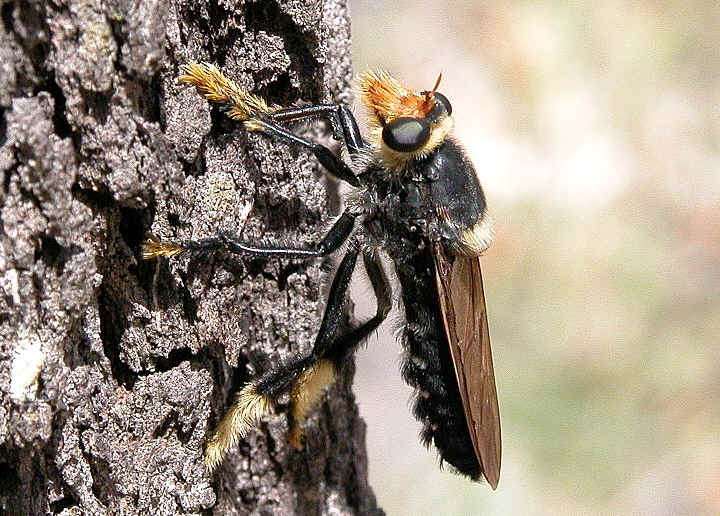
- Subfamily Dasypogoninae, male, body length 45mm
- Robber flies in this subfamily have the wing vein R2+3 open, ending on the wing margin. Some robber flies in this subfamily have orange or yellow marking on body or wings to mimic sphecid and vespid wasps
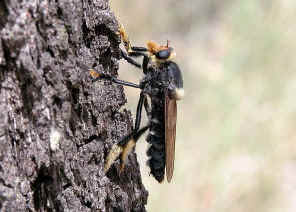
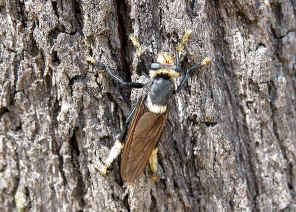
- This is one of the largest fly species with wing-spans up to 75mm. We saw this fly once in Daisy Hill Forest during later summer 2005. It was resting on a large tree trunk (River She-oak tree Casuarina cunninghamiana). We noticed the fly by its large compound eyes and golden hairs on its face. It flied fast in short distance with loud buzzing sound.
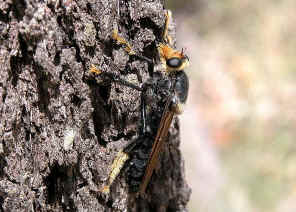
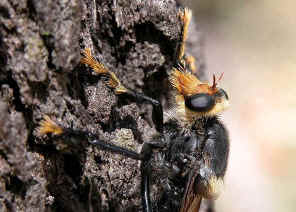
- The Giant Robber Fly has a dark brown to dark blue body, a pair of golden brown wings, black long and strong legs with short dense golden yellow hairs. We believed the fly in above photos was a male. The flies in those photos below were females, with smaller body size (length 40mm).
Lay eggs on She-oak pine tree trunk
- On a Dec 2007 afternoon we saw this Giant Robber Fly in Karawatha Forest when we were looking for Variable Jewel Beetle in a She-oak tree area. The Giant Robber Fly land on a large She-oak tree trunk in front of us. The Giant Robber Fly looked the same as the one we saw before (above), except a bit smaller. The adbomen was dark blue in colour and less hairy. This could be the female and the one above could be the male.
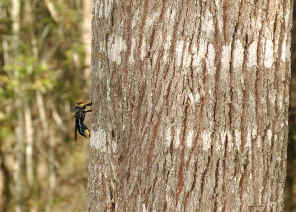
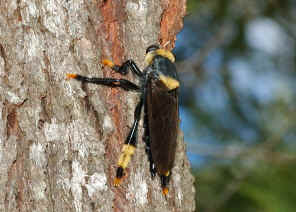
- Female, body length 40mm
- After we took some photos, because we came too closely, it flied away to another She-oak tree a few meter away. We followed it, every time we came close, it flied to another tree. After a few similar chasing, it flied high and disappeared.
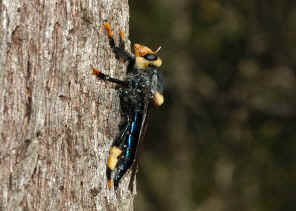
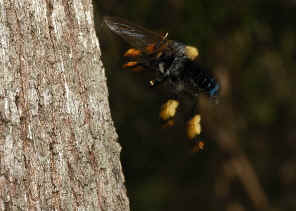
- Then we went back to the where we first met the robber fly, we found that the robber fly had already returned to the tree. There were quite a number of She-oak trees near by with the same size. But the robber fly seemed only interested on that tree. It might sensed something special with that tree.

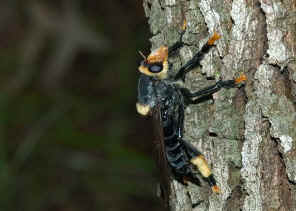
- We saw the robber fly was touching the tree trunk by its abdomen tip, just like inserting something under the bark. We believed it was laying her eggs and inserting them under the bark. Its did not check or select the locations for laying eggs on the tree trunk, it seemed choosing the location randomly. It took 10-20 seconds there and flied to another position, same tree, for another 10-20 seconds. It did it on the different locations, with different height from ground.
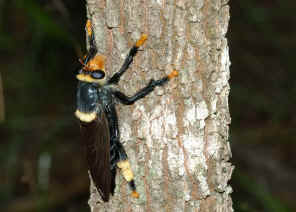
- We checked our reference materials and found that not much about robber fly eggs and larvae are known. Most believed in general robber fly larvae live in soil or rotting wood, often regarded them as predacious or parasitic, but not exactly sure. Those Giant Robber Flies were found always near the She-oak pine tree could be a hint to follow.
- After we notices that this giant fly was always found on large She-oak tree trunk, this fly became not too difficult to find.
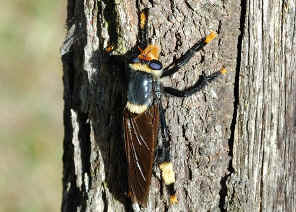

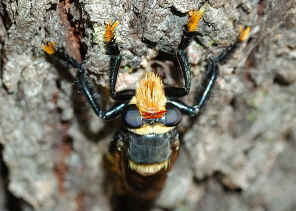
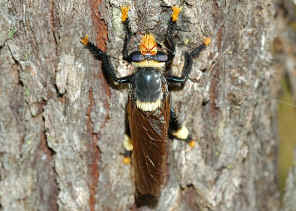
- We have the information of another giant robber fly, the Giant Yellow Robber Fly.
Always found on She-oak pine tree trunk
? Giant Robber Fly Pupal Skin
- We found this pupal skin when we were looking for Variable Jewel Beetle. It was on the soil next to a She-oak pine tree, covered by very thick layer of fallen dry She-oak pine leaves. It was strongly armed with spines and hooks. There was the large four points hook at the end tip.
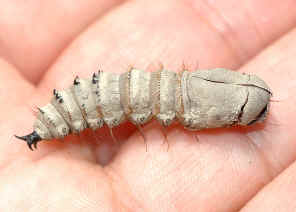
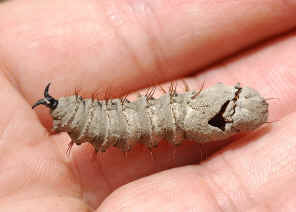
- Pupal skin length 35mm
- The pupal skin should be a fly pupa and even looked like a robber fly pupa. Because of its size and where it was found, we believed it is the pupal skin of a Giant Robber Fly.
- Reference:
- 1. Robber Fly - Friends of Chiltern Park Newsletter February 2002.
- 2. Phellus olgae Paramonov - ACIN, Australian Insect Common Names, CSIRO, 2005.
- 3. Insects of Australia and New Zealand - R. J. Tillyard, Angus & Robertson, Ltd, Sydney, 1926, p363 (Phellus glaucus).
- 4. teneral adult next to pupal skin - Whitney Cranshaw, Colorado State University, United States, 2006.
- 5. Insects of Australia, CSIRO, Division of Entomology, Melbourne University Press, 2nd Edition 1991, p 729, Fig.39.11B.
